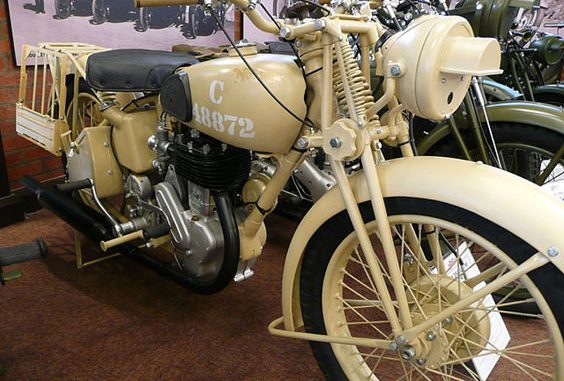
Uncovering the secrets of Bletchley Park must surely have become a legend in itself, writes Richard Meredith.
It may be 75 years since World War II was won but what went on there in those dark and distant days is still emerging into the light.
The many thousands of people who worked at the Park were ordered not to tell a soul about how they helped to crack the Germans’ enigma machine; so they didn’t.
Indeed, some still haven’t.
But almost every other week it seems, another new book, film or recording emerges to tell ‘the whole story’ of how Bletchley Park won the war.
Well, whisper it softly but now I can reveal what really happened It was actually Watling Street that won the war in collaboration with WD Norton!
My reference of course is to the ribbon of highway which all of us round here know as the A5 – originally built by the Vikings in a hedging and ditching exercise, straightened by the Romans a millennium or so back, and much improved since.
Purists will tell you that these days it actually stretches from Dover and Canterbury in Kent to Holyhead in north Wales – and not all of it is the A5 – but the bit we are interested in is the stretch up from London to Towcester and we call that Watling Street.
My personal proposition is that it was the road and not the Park that won us the war. And more especially it was the despatch riders who rode up and down it all day long who deserve our very best admiration..
I had better declare an interest here.
My family – Reynolds on my mother’s side – were owners of what became a Station Y in the spider’s web that was otherwise the network of radar and radio waves that came via the skies to Bletchley.
Arkley View, including our old house Arkley Lawn, a rambling old place on Barnet Hill, high above north London, was commandeered from my family by the Signals Regiment at the start of the war.
In the beginning, they listened only for German ‘moles’ sending clandestine messages across the capital but by the end they were running a deciphering results service on an industrial scale up to Bletchley as if lives depended on it (which, let’s be honest, they very often did).
Arkley was hardly a roar in second gear across to Elstree and its link with Watling Street at its southern end, so all of every day and every week the locals were used to seeing motorbike riders (or couriers as we would call them today) beetling up to Bletchley and back.
No e-mails in those days of course, just panniers full of slips of paper with messages plucked from the ether and needing to be rushed up to the Park for translation.
Whaddon Hall, another of the listening stations where 75-year-old film emerged of a jolly staff party just the other day, was another X-station and again the good old A5 was the hero, enabling a route for captured messages from Windy Ridge across to Stony Stratford and then down to the boffins at Bletchley.
Other local sites enjoyed the metalled artery too – Newport Pagnell, where command communications vehicles (amongst others) used it for testing; Hanslope Park, originally another Y listening or interceptor station, and Gayhurst Manor and Crawley Grange (code-breaking equipment) … all were within a minor compass calibration of Watling Street.
There was no Milton Keynes then of course, just a passage through the chalky Downs at Dunstable on the way going north and a throng of pleasant villages until the mansion of Bletchley with its mushrooming crowd of Nissen huts loomed large..
Word was that Whitehall chose it as the centre of things because it was far enough out of London not to be bombed yet near enough for despatch riders to get up or down to the code-breakers lair in under an hour.
Not that negotiating the route was always easy. Dual-carriageways were waiting to be invented then, there were slippery bits without grit on cold winter mornings and who could envisage the cult status that roundabouts would achieve in future years?
Despatch riders or DRs for short, buzzed up and down like camouflaged sandflies collecting and delivering the coded messages, often many times a day.. Virtually all riders were from the Royal Corps of Signals and only a handful were women.
Triumph, Norton, BSA and Matchless were motorbikes they used the most with the Norton WD16H an overwhelming favourite. Made in Birmingham, the WD Norton (short for War Department) was ordered in batches of many thousands throughout the war and they were used by all branches of the Services.
Afterwards they were also sold to other countries in Europe and Scandinavia until 1954 and, like Bletchley Park and Watling Street, they are said to enjoy a strong following of enthusiasts to this day.
Richard Meredith, who lives in Newport Pagnell, is a writer of travel novels and local history books (as Jack Reynolds). His book Bond in Bucks is available at www.WordGo.org.uk He is a member of MKHA. His great uncle was Air Marshal Sir Bryan Reynolds who ended a distinguished career in the RAF as C in C, Coastal Command in 1959.